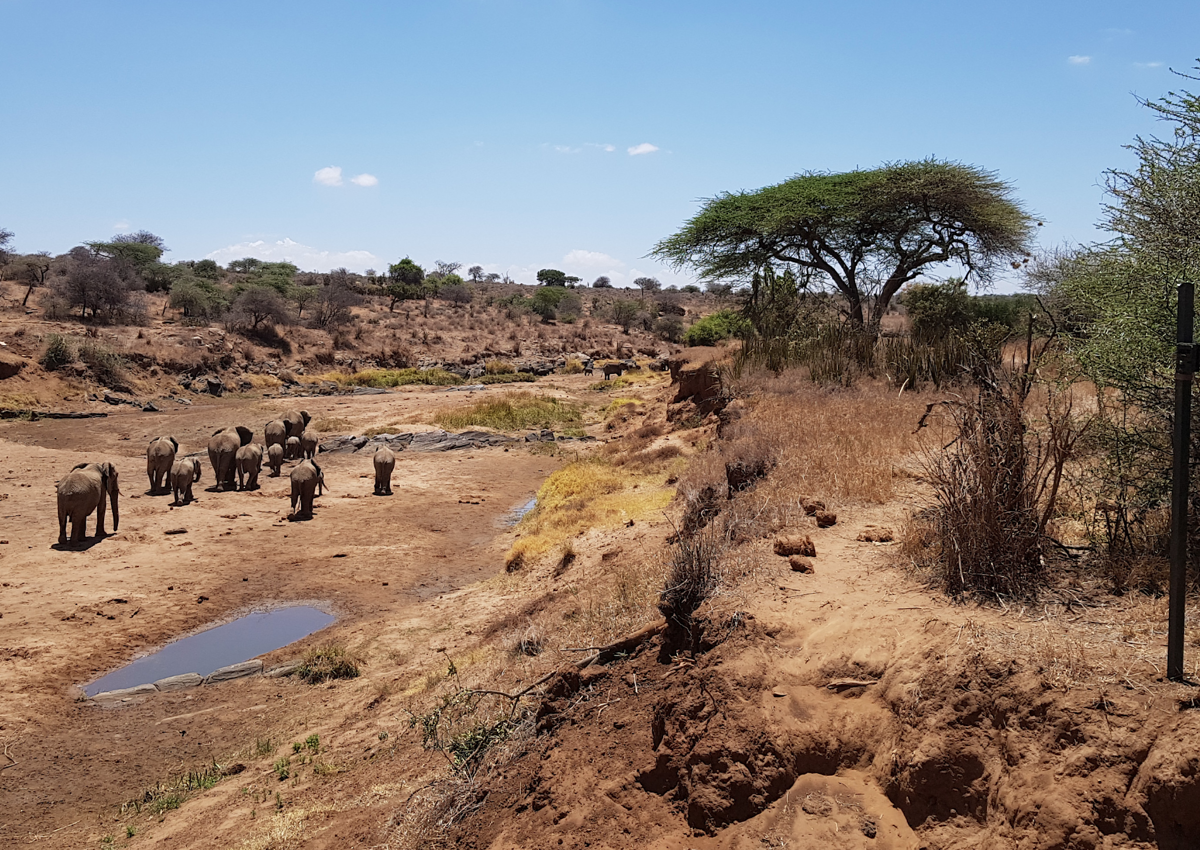25 Sep 2019
Can we track elephants using the vibrations of their footsteps?
by Ben Moseley, Alexandre Szenicer, Paula Koelemeijer, Michael Reinwald, Tarje Nissen-Meyer and Beth Mortimer

Ben Moseley is a student at the AIMS CDT, a joint venture between the Departments of Engineering Science and Computer Science. He tells us all about a recent trip to Kenya, which saw him using his machine learning expertise to assist in conservation efforts.
We went to Kenya to see if it is possible to track elephants using the vibrations they make through the ground. The outputs of this unique project could provide better tools for conservation and new insights into their behavior.
Elephants are fantastically intelligent and social animals, yet many are endangered and living with threats such as poaching, habitat destruction and conflicts with local people. Conservation is crucial but monitoring these animals in real-time and over large areas is expensive and technologically challenging.
Furthermore, there is still much to discover about how elephants interact with others and their environment. They are socially complex animals and they communicate in a variety of different ways. Our recent Ted Talk showed how they use vibrations through the ground to communicate.
There are many different types of elephant behavior which generate ground vibrations. These include running, playing, bathing and walking. Elephants also make vocalizations, such as trumpets and “rumbles”, which are known to propagate vibrations into the ground.
In this project we have been researching whether it is possible to track elephants by detecting these vibrations. A key benefit of using ground vibrations is that we think they can travel long distances, potentially allowing us to track the elephants at low cost, non-invasively and over large areas.
To carry out our research we traveled to the Mpala research center in Nanyuki, Kenya in February 2019. This center is home to nearly 7,000 elephants and stretches over 48,000 acres of savanna, bushlands and rivers, providing an excellent place to study elephants in their natural habitat.
To detect vibrations, we used seismometers. These are low-powered, buried instruments which can detect very small movements of the ground. We deployed 20 of them, covering an area of nearly 50 square kilometers. We also deployed camera traps to help us identify elephant behaviors. We mounted cameras on poles and trees which took photographs of any wildlife that moved across their field of view.
Over three weeks of field work we recorded over 10,000 hours of seismic recordings and 50,000 images and videos. We observed a variety of different elephant behaviors, including running, playing, bathing, “rumbles” and fighting.
We are currently in the data analysis stage, where we are testing many different detection and localization methods on this dataset. With the camera images as a guide, our goal is to use AI to detect elephants from the recorded seismic signals. Once we are able to detect elephants, we will use triangulation methods to locate and track them.
Alongside tracking our research could provide new insights into elephant behavior, as well as their long-distance communication.
This work is funded by National Geographic and the John Fell Fund. It is a cross disciplinary effort between the Departments of Earth Science, Computer Science and Zoology.

A local expert installs a camera trap whilst a family of elephants walk along a dried river bed at the Mpala research center. Their motion generates ground vibrations which we hope to use to track them.

We used seismometers buried in the ground to detect the vibrations made by elephants. Once installed, we placed cages around our seismometers to protect them from the wildlife.

We placed multiple seismometers around a dam which elephants often visited. We observed a lot of activities here; elephants running, playing and bathing. We also recorded “rumbles” – vocalizations which propagate vibrations into the ground.




